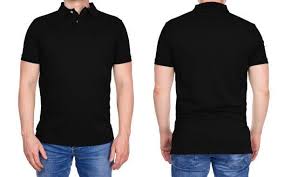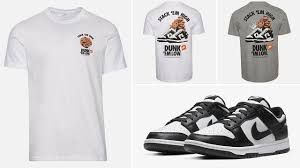The Origins of the Polo Shirt
The polo shirt for men has a rich history rooted in sports and classic style. Originally designed in the late 19th century for polo players in India and England, the shirt was created as a practical alternative to stiff dress shirts. Its short sleeves, soft collar, and buttoned placket provided ease of movement and breathability on the field. By the 1920s, tennis legend René Lacoste revolutionized the polo shirt by introducing a version made from lightweight cotton piqué, which quickly gained popularity. From there, the polo shirt transcended its athletic beginnings and became a staple of men’s wardrobes worldwide.
The Polo Shirt as a Fashion Icon
The evolution of the polo shirt reflects its journey from sportswear to a symbol of casual elegance. In the mid-20th century, brands such as Ralph Lauren popularized the polo shirt as part of the American preppy style, making it a wardrobe essential for men of all ages. The combination of sporty origins and refined design allowed the polo shirt to bridge the gap between formal and casual fashion. Today, it is recognized as a versatile garment suitable for work, leisure, and even semi-formal occasions.
Key Features of a Polo Shirt
The classic polo shirt is defined by several distinctive features. Its soft collar sets it apart from t-shirts, while the buttoned placket offers adjustable styling. Short sleeves ensure comfort in warm weather, though long-sleeved versions are also available. Cotton piqué fabric remains the most popular choice due to its breathability and durability, though blends with polyester and elastane offer stretch and wrinkle resistance. Modern designs feature subtle branding, embroidery, or minimalist detailing, making polo shirts easy to pair with both tailored trousers and casual jeans.
The Polo Shirt in Men’s Style
The polo shirt is one of the most versatile garments in men’s fashion. It can be dressed up with chinos and loafers for a smart-casual look, or paired with denim and sneakers for a relaxed weekend outfit. In business casual settings, polo shirts provide an alternative to button-down shirts, especially in warmer climates. Golfers, sailors, and athletes continue to wear polo shirts as part of their sporting uniforms, reinforcing the garment’s strong connection to active lifestyles. Whether tucked in or left untucked, the polo shirt adapts effortlessly to multiple style preferences.
Why Polo Shirts Remain Timeless
The enduring popularity of polo shirts can be attributed to their simplicity, functionality, and universal appeal. Unlike trend-driven pieces, polo shirts have maintained their relevance across decades of fashion changes. Their adaptability makes them appealing to men of all ages, while the balance of comfort and elegance ensures they never feel outdated. In addition, the availability of polo shirts in a wide variety of colors, fits, and fabrics guarantees that every man can find a version that suits his personal style.
Popular Brands and Their Influence
Several brands have shaped the identity of the men’s polo shirt. Ralph Lauren elevated the polo to a global fashion icon, embedding it in the preppy lifestyle. Lacoste remains closely tied to the shirt’s origins, offering modern interpretations of René Lacoste’s original design. Sports brands such as Nike and Adidas have created performance polos for golf and tennis, blending technical fabrics with athletic functionality. Publications like Esquire often highlight polo shirts as wardrobe essentials, showcasing their enduring relevance in men’s fashion. Each brand’s unique approach has ensured the polo shirt continues to evolve while staying true to its classic roots.
The Polo Shirt in Different Occasions
The versatility of polo shirts makes them appropriate for various occasions. For casual outings, a solid-colored polo shirt paired with shorts offers a simple yet stylish look. For business casual, a fitted polo with tailored trousers projects professionalism without the formality of a dress shirt. At social gatherings, patterned or textured polo shirts add personality while maintaining elegance. In sports, performance polos with moisture-wicking fabrics ensure comfort during physical activity. This adaptability across contexts is a major reason polo shirts remain indispensable in men’s wardrobes.
Styling Tips for Men’s Polo Shirts
When styling a polo shirt, fit is key. A slim-fit polo enhances a modern silhouette, while a regular fit offers a relaxed, classic vibe. Neutral colors like white, navy, and black are timeless, while bold colors and patterns can make a statement. Polos pair well with chinos, jeans, and even suits in less formal settings. Footwear choices—from loafers to sneakers—further define the overall look. Accessorizing with a belt, watch, or lightweight jacket can elevate the outfit. The styling possibilities demonstrate the polo shirt’s adaptability to both personal and professional wardrobes.
The Polo Shirt in Global Culture
Beyond fashion, the polo shirt holds cultural significance. It has long been associated with sportsmanship, elegance, and effortless style. Subcultures have adopted polo shirts to represent identity, from British mods in the 1960s to American prep culture in the 1980s. In many countries, polo shirts are considered appropriate for school uniforms and workplace dress codes, symbolizing their universal acceptance. Media outlets like Men’s Health often feature polo shirts in their style sections, reinforcing their role as a modern wardrobe essential.
Sustainability in Polo Shirt Production
As sustainability becomes central to modern fashion, many brands now offer polo shirts made from organic cotton, recycled polyester, or eco-friendly blends. Consumers increasingly seek garments that balance style with environmental responsibility. The durability of polo shirts also contributes to sustainability, as high-quality versions can last for years with proper care. Brands investing in sustainable production ensure that the polo shirt not only remains stylish but also aligns with the values of today’s eco-conscious consumers.
The Future of Polo Shirts for Men
The future of men’s polo shirts lies in continued innovation. Designers are experimenting with technical fabrics that offer stretch, moisture control, and temperature regulation. Digital fashion and customization may allow consumers to design unique polos tailored to their preferences. Sustainability will play an even greater role, with recycled and organic materials becoming standard. Despite these innovations, the polo shirt’s timeless silhouette and versatile nature ensure it will remain a cornerstone of men’s fashion for decades to come.












